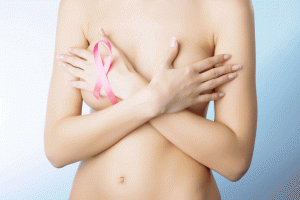Why Should I Consider Autologous Breast Reconstruction?
Breast reconstruction can be a tough pill to swallow. I understand why the idea of additional surgery after a mastectomy may feel overwhelming. But a breast reconstruction procedure can play a vital role in helping a woman emotionally recover and take back control of her body following her battle with breast cancer. And for many women who opt for breast reconstruction, rebuilding the breast with your own natural tissue (also known as autologous reconstruction) can be an appealing option.
 Rather than using breast implants; autologous breast reconstruction transfers the patient’s own fat and sometimes skin and muscle from the abdomen, back, or another area to the chest and shapes it into a new breast. Some patients prefer the natural look and feel of breasts reconstructed with tissue flaps. Breasts reconstructed with autologous reconstruction will behave like natural breasts, even fluctuating in size after weight gain or loss. While every surgery has its own risks, autologous reconstruction does not carry the risk of implant-related complications, nor does it require the maintenance exams that implants do.
Rather than using breast implants; autologous breast reconstruction transfers the patient’s own fat and sometimes skin and muscle from the abdomen, back, or another area to the chest and shapes it into a new breast. Some patients prefer the natural look and feel of breasts reconstructed with tissue flaps. Breasts reconstructed with autologous reconstruction will behave like natural breasts, even fluctuating in size after weight gain or loss. While every surgery has its own risks, autologous reconstruction does not carry the risk of implant-related complications, nor does it require the maintenance exams that implants do.
Autologous breast reconstruction is a complex procedure that requires experience, technical expertise, and a seasoned eye. Unlike implant-based reconstruction, autologous reconstruction requires reconnecting tissue and restoring blood supply in a very intricate and precise way. During consultation, we will determine if autologous breast reconstruction is right for you.
I offer my patients a number of choices for autologous reconstruction using either a TRAM flap (abdominal tissue) or latissimus flap (back tissue). I perform two types of TRAM flap techniques, the pedicled TRAM flap and free TRAM flap, depending on the unique needs of each patient. Though both TRAM flaps use fat, muscle, and sometimes skin from the abdomen to form a new breast, during a pedicled TRAM flap procedure the tissue remains connected to its original area, whereas the free TRAM flap involves completely removing the tissue from the body and reattaching it to the blood vessels in the chest.
Regardless of which breast reconstruction surgery a patient chooses, the end goal is always the same: to make the physical changes necessary to help each patient feel whole again following their mastectomy. As a double board-certified plastic surgeon, I take great pride in providing my patients with the chance for a fresh start after breast cancer. If you are interested in breast reconstruction or another type of plastic and reconstructive surgery and would like to know more, please contact me, Dr. Franklyn Elliott, to schedule a consultation today. You can also follow along with us on Facebook, Twitter, and Google+ for more helpful tips and cosmetic surgery information.

 This year, Northside Hospital and the Southeastern Society of Plastic and Reconstructive Surgeons (SESPRS) hosted the annual Atlanta Breast Surgery Symposium to keep cosmetic and reconstructive breast surgeons around the globe updated with the most precise and efficient breast surgery approaches, tools, and technologies. The first symposium was held nearly 30 years ago, founded by Atlanta Plastic Surgery’s Dr. Carl Hartrampf, who developed the TRAM Flap method of breast reconstruction.
This year, Northside Hospital and the Southeastern Society of Plastic and Reconstructive Surgeons (SESPRS) hosted the annual Atlanta Breast Surgery Symposium to keep cosmetic and reconstructive breast surgeons around the globe updated with the most precise and efficient breast surgery approaches, tools, and technologies. The first symposium was held nearly 30 years ago, founded by Atlanta Plastic Surgery’s Dr. Carl Hartrampf, who developed the TRAM Flap method of breast reconstruction.